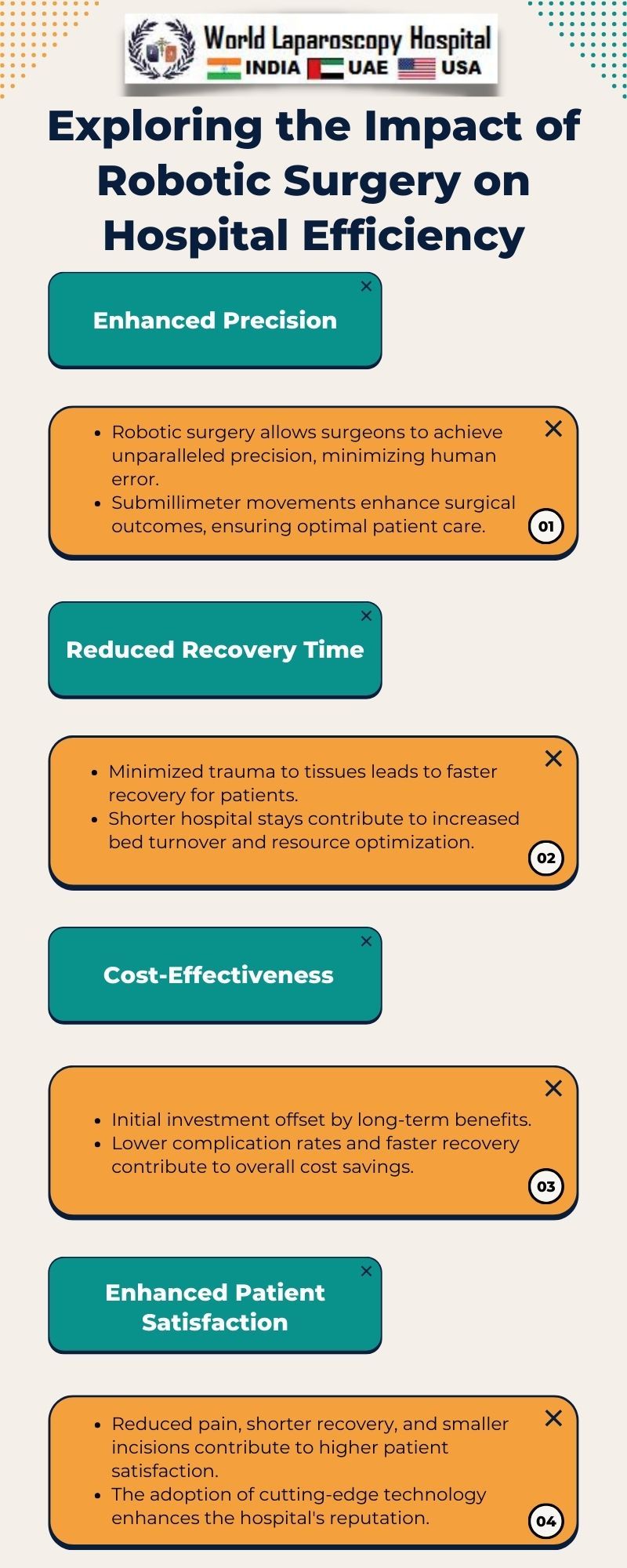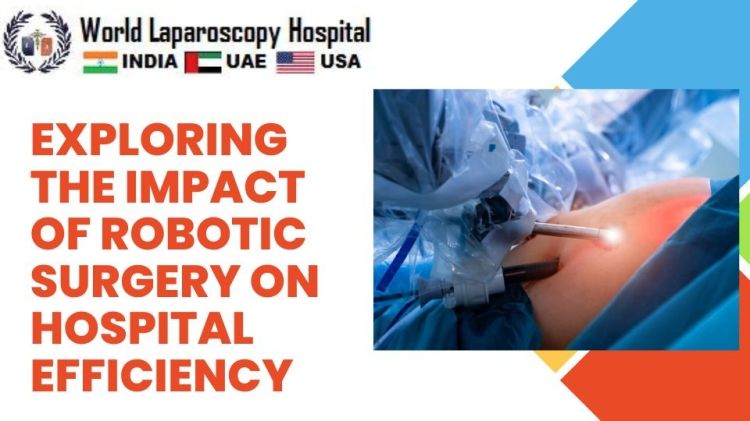Exploring the Impact of Robotic Surgery on Hospital Efficiency
Introduction:
In recent years, the field of healthcare has witnessed a paradigm shift with the introduction and integration of robotic surgery. This groundbreaking technology has not only transformed the landscape of medical procedures but has also significantly impacted the overall efficiency of hospitals. In this comprehensive exploration, we delve into the multifaceted aspects of how robotic surgery is shaping the future of healthcare delivery.

Robotic surgery, also known as robot-assisted surgery, has evolved from traditional laparoscopic techniques. The introduction of robotic systems, such as the da Vinci Surgical System, marked a turning point by providing surgeons with enhanced precision, dexterity, and control during minimally invasive procedures. The evolution of these robotic systems has paved the way for a myriad of surgical applications across various medical specialties.
Precision and Accuracy in Surgical Procedures:One of the primary impacts of robotic surgery on hospital efficiency is the unparalleled precision and accuracy it offers. Unlike traditional methods, robotic systems provide surgeons with a three-dimensional, high-definition view of the surgical site, coupled with precise and tremor-free instrument control. This level of precision minimizes the risk of errors, reduces complications, and ultimately leads to better patient outcomes.
Reduced Hospital Stays and Quicker Recovery:The efficiency gains associated with robotic surgery are most evident in the reduced length of hospital stays and accelerated recovery times for patients. Minimally invasive procedures facilitated by robotic systems result in smaller incisions, less trauma to surrounding tissues, and decreased postoperative pain. Patients undergoing robotic surgeries often experience quicker recovery, enabling hospitals to optimize bed utilization and allocate resources more efficiently.
Enhanced Workflow and Operational Efficiency:Robotic surgery has a transformative effect on the overall workflow within hospitals. The integration of robotic systems streamlines surgical processes by facilitating smoother coordination among surgical teams. The intuitive interfaces and ergonomic design of robotic consoles contribute to efficient communication and collaboration, fostering a more synchronized and organized surgical environment.
Training and Skill Enhancement for Surgeons:While robotic surgery introduces advanced technology, it also necessitates specialized training for surgeons. Hospitals investing in robotic systems often provide comprehensive training programs to ensure surgical teams can harness the full potential of these technologies. Surgeons, through training and practice, enhance their skills in robotic-assisted procedures, contributing to increased proficiency and overall efficiency in the operating room.
Cost Considerations and Return on Investment:The implementation of robotic surgery comes with significant initial costs, including the acquisition of robotic systems, training programs, and maintenance expenses. However, the long-term benefits, such as reduced hospital stays, lower complication rates, and quicker recovery times, contribute to cost savings. Hospitals often find that the overall return on investment justifies the initial financial outlay as efficiency improvements lead to better resource utilization and patient satisfaction.
Expanding Applications Across Medical Specialties:Initially associated with urology and gynecology procedures, robotic surgery has expanded its applications to various medical specialties, including cardiovascular, gastrointestinal, and orthopedic surgeries. The versatility of robotic systems allows for the adaptation of minimally invasive techniques to a wide range of procedures, further contributing to the overall efficiency of hospitals by offering advanced treatment options for diverse patient needs.
Challenges and Considerations:Despite its transformative potential, robotic surgery faces challenges and considerations. These include the initial cost barriers, the learning curve for surgeons, and concerns related to the potential overuse of technology. Additionally, ongoing advancements and updates in robotic systems necessitate continuous training and adaptation, raising questions about the long-term sustainability and scalability of these technologies within healthcare institutions.
Patient Safety and Satisfaction:Patient safety remains a paramount concern in healthcare, and robotic surgery plays a significant role in enhancing safety standards. The reduced risk of complications, minimized blood loss, and faster recovery contribute to improved patient safety. Moreover, the positive patient experiences associated with robotic-assisted procedures contribute to higher satisfaction rates, reinforcing the overall impact on the efficiency of healthcare delivery.
Future Prospects and Technological Advancements:As technology continues to evolve, the future of robotic surgery holds promising prospects. Ongoing research and development aim to enhance robotic systems with artificial intelligence, machine learning, and augmented reality, further refining surgical precision and expanding the scope of robotic applications. These advancements are poised to elevate the efficiency of hospitals, ushering in a new era of advanced and patient-centric healthcare.
Conclusion:
In conclusion, the impact of robotic surgery on hospital efficiency is profound and multifaceted. From revolutionizing surgical precision to optimizing workflow and resource utilization, robotic surgery stands at the forefront of a transformative era in healthcare. As hospitals continue to embrace and adapt to these technological advancements, the synergy between robotics and medicine promises a future where patient outcomes are maximized, and the overall efficiency of healthcare delivery reaches unprecedented heights.
